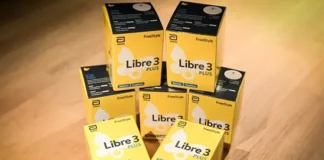Finances FYI Presented by JPMorgan Chase
The sooner you start saving toward retirement, the better. Your employer’s 401(k) match plan helps your investment grow, so you can retire comfortably and realize your post-employment dreams.
Understanding your plan’s terms and benefits is essential to maximize your savings and earning potential. Use the following information and tips to help your 401(k) employer match work for you in 2023.
How Traditional 401(k) Employer Matching Works
With a traditional 401(k), you automatically contribute a percentage of your pre-tax salary. Employers offering a 401(k) match will match your contribution up to a certain amount, according to Forbes.
Some businesses offer a whole match, and others provide a partial match. Fidelity Investments’ Katie Taylor told Forbes that employers commonly cap the 100% match at 3% of your total yearly compensation. So, if you make $50,000 a year and save 3%, that’s $1,500 a year from you and $1,500 a year from your employer for a total annual retirement savings of $3,000.
If the same employer offers a 50% match instead, it would add $750 to your $1,500 for a total annual retirement savings of $2,250.
Regardless of the percentage, an employer match is free money to fund your retirement.
Understanding a Profit-Sharing Employer Contribution
Your company might offer a profit-sharing 401(k) contribution instead of making a direct match. You’ll receive the benefit even if you don’t invest funds into a company retirement plan. Your employer decides if, when, and how much to give each year, according to the U.S. Department of Labor.
For example, if your company meets or exceeds profit goals in 2023, it might issue a 401(k) profit share of 5%. In this scenario, you might receive more or less than another employee if you earn different wages.

Tips to Maximize Earnings
Depending on your age, retirement might seem far away, but it’s important to prepare. Follow these tips to maximize your earning potential:
- Join your employer’s plan. In 2020, over 67% of private industry workers had access to an employer retirement plan, according to the U.S. Bureau of Labor Statistics. Retirement savings are critical to your future, so take advantage of this benefit.
- Start saving early. The sooner you start saving, the more time your money has to accumulate and grow. If you are just starting your job, join a plan as early as your company allows—some companies require you to work for a certain amount of time before enrolling in their 401(k).
- Contribute enough to get your employer’s match. If your employer offers a 100% match for up to 5% of your salary, and you contribute only 3%, you are losing an additional 2% that your company is willing to give.
- Save beyond the company match, if possible. Always save as much money as possible for retirement, regardless of your employer’s match. If the company match is 3%, and you can comfortably save 6% of your salary, go for it. The more you set aside now, the more financially secure you’ll be in the future.
- Stay within annual contribution limits. The IRS will publish 2023 limits of what you and your employer can deposit in your 401(k). In 2022, you can give up to $20,500. When added to your employer’s contribution, the limit is $61,000. If you are 50 or older, you can add an extra $6,500 as a catch-up contribution. If you exceed the limits, the IRS will tax you for the year you contribute and when you withdraw funds.
- Avoid early withdrawals. Avoid taking money out of your 401(k) so it has time to grow. The IRS also assesses a 10% early withdrawal penalty if you are under age 59½.
Overall, you’re in control of your financial future. Contributing to your company’s 401(k) and maximizing your employer match will help you enjoy a happy, secure retirement.
Finances FYI is presented by JPMorgan Chase. JPMorgan Chase is making a $30 billion commitment over the next five years to address some of the largest drivers of the racial wealth divide.
























